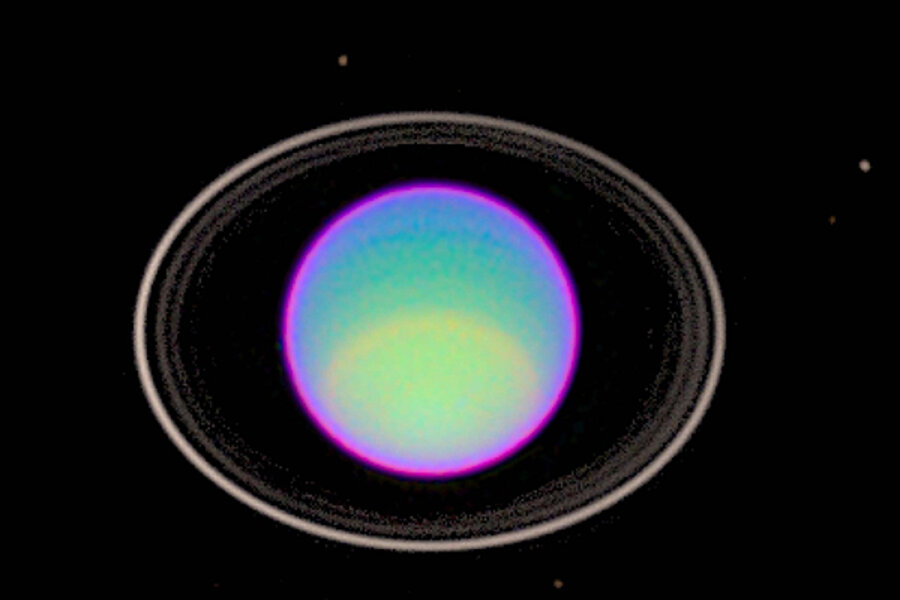Scientists plan Uranus probe
Loading...
British space scientists are leading plans to send a probe to explore giant ice planet Uranus. They have put forward a detailed proposal to the European Space Agency to launch a joint mission with NASA to the distant world, 1.8 billion miles from the sun.
It would give scientists their first close-up views of Uranus since NASA’s Voyager 2 flew past and captured fleeting pictures 25 years ago.
The £400million mission is designed to go in orbit to study the rings around Uranus and answer questions such as why it gives off so little heat.
Uranus – first spotted by Sir William Herschel from Bath, England, in 1781 – also has the most powerful wind observed in the solar system, blowing at more than 500mph.
The planet is unusual because it is tilted right over on its side. Astronomers believe this was caused when Uranus was given a mighty whack by another world in a cosmic collision.
More than 160 scientists are backing the Uranus Pathfinder project which is led by Dr Chris Arridge, of University College London’s Mullard Space Science Laboratory in Surrey.
He told Skymania in an exclusive interview: “We’ve only really scratched the surface of Uranus. It is very difficult to observe from Earth because any detail is smeared out.
“Since Voyager flew by we know the rings and atmosphere have changed. We need close-up measurements. Uranus is ripe for learning a lot from. It is so different among the planets.
“We tend to group Jupiter, Saturn, Uranus and Neptune as the gas giant planets. But Jupiter and Saturn are dominated by hydrogen and helium with small rocky cores.
“When you go to Uranus and Neptune you find their composition is dominated a lot more by rock and ice. There is a lot more water in their atmospheres, a lot more methane.”
He added: “One of the big mysteries about Uranus is that it doesn’t emit much heat at all. Its axis is also highly tilted to its orbit so essentially it rolls around the solar system.
“It is thought that something the size of Mars or Earth hit Uranus early in the solar system and tilted it into its side, and that may have caused a massive loss of primordial heat.”
Uranus takes 84 years to orbit the Sun which leads to extreme seasons. Dr Arridge said: “Because there is so little heat coming from inside Uranus, its atmosphere is completely driven by force of sunlight. And because it has got this large tilt in its axis one pole is continually in sunlight for 42 years while the other is in darkness and then the situation is reversed for 42 years.”
The nuclear-powered probe, which the scientists hope to launch in 2021 would take an incredible 15 years to travel the vast distance to Uranus. It will be sent zipping past other planets including Venus and Saturn to help build up speed, like a game of interplanetary snooker.
Finally it will go into orbit around Uranus to study the planet, its five main moons and other smaller natural satellites.
Uranus Pathfinder is being proposed as an M-class (medium-class) mission for ESA. But Dr Arridge said: “We see this as medium scale only in terms of price. For the amount of science you get back it is a large scale mission for quite low cost.”
• Discover space for yourself and do fun science with a telescope. Here is Skymania’s advice on how to choose a telescope. We also have a guide to the different types of telescope available. Check out our monthly sky guide too!
©PAUL SUTHERLAND, Skymania.com
Please click here to get FREE email alerts of our latest space stories!
Paul Sutherland blogs at Skymania News





